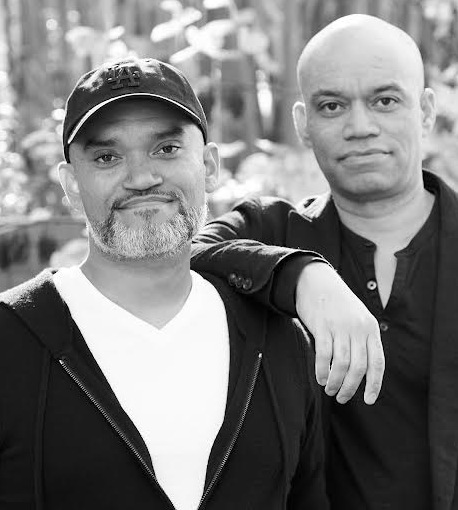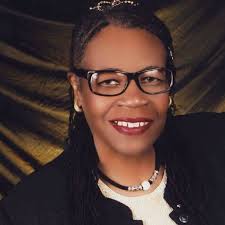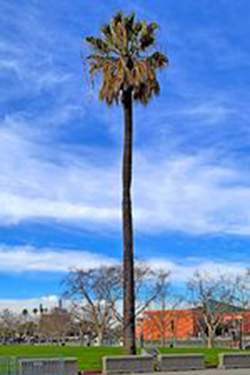By Darlene Donloe
Contributing Writer
Kris Wimberly knew what he wanted out of life at a very early age — and he did everything in his power to bring it to fruition, including working as a custodian at the Disney Resort in Anaheim.
It turned out to be just the break he needed to get into the animation industry.
His temporary stint as a custodian was just a stepping stone. Wimberly had big plans.
Today, he is the co-founder and head of creative for Studio Smokescreen, an independent, Los Angeles-based, Black-owned animation studio dedicated to leading significant changes in diversity and inclusion across the animation industry. He shares leadership duties with his brother, Chase Wimberly. The brothers grew up in Southern California, mostly in Orange County.
Together the brothers, who opened the company in 2020, are steadily changing the face of the animation and illustration industry.
The full-scale studio is considered a first of its kind. It’s designed to elevate marginalized and underrepresented talent striving to break into roles on big studio projects.
Kris Wimberly, 39, who likes to describe what he does as, “I put lines on paper, and people give me money for it,” quickly rose through the animation industry ranks.
His first job out of college — Cal State Fullerton — was on “SpongeBob SquarePants.”
He went on to become the director of the Disney series, “Firebuds.” His impressive credits include Disney’s “Elena of Avalor,” HBO Max’s “Close Enough,” Universal’s “Curious George 4: Royal Monkey,” and the Cartoon Network’s “Teen Titans Go!”
I recently spoke to Kris Wimberly about his career and Studio Smokescreen, a company that likes to give individuals the right tools to be successful in the industry by providing hands-on experience and mentoring.
DD: How did your interest in illustration and animation develop?
KW: It was a big hobby of mine, a passion since I was young. I honestly believe I was drawing before I could write my name. I was maybe 3 years old. Since then, I wanted to make cartoons.
DD: From where did you draw inspiration?
KW: I found humor in shows like “Tom & Jerry” and “Looney Toons.” It was seeing how people reacted to the same type of humor. I also remember watching the Paula Abdul “Opposites Attract” video. It blew my mind — a human dancing with a cartoon. Then I saw “Who Framed Roger Rabbit?” If I could live my life like that — living with cartoons — it would be a good life.
I created my own comic books and cartoon characters like Lulu Lizard. I created characters I wanted to pitch to Warner Bros.
DD: Talk to me about working as a custodian at Disneyland.
KW: It was calculated and specific. Before I took the job, I did my college years. I did sales. It dawned on me one day that I was going to get stuck making a ton of money. There were other things I wanted to do. I needed to pivot quickly. I will start at the bottom and climb my way up the ladder. The next week was my spring break. I went to Disneyland, knocked on the door and asked for a job. I could figure out how it all works. They gave me a job. I started as a custodian.
DD: How long did you do that?
KW: I did it for four months to the day. When I was approaching 120 days, there was a show opening at California Adventure. It was a drawing position. They allowed me to audition for it. They let me out of the probation period early.
There is a code that I live by. If you tell people what is important, they will help you achieve it. If they can see you are genuine, everyone wants to get on board.
DD: What came next?
KW: I was at the Animation Academy. Then I broke into studios as an intern at Nickelodeon. They saw my determination and my goals. Production assistant came next. I did that for two months. Then I transferred to doing storyboards. I was promoted up the ranks to director, supervising director and creating.
DD: You are the co-founder and head of creative for Studio Smokescreen. How did that come about?
KW: At the top of the pandemic, my brother and I went on a Father’s Day hike. I mentioned the great streak I was on. I was getting tons of job offers. My brother, who is not traditionally from animation, said maybe we should look into doing something. I told him I’d do it if he did it with me.
That’s how we started. He asked me why are we doing this. He said there is no shortage of animation studios, so why start one? I told him, that throughout my career, I was bumping against glass ceilings. He has two young boys. I have two young girls. We want to see things that they can get inspired by. It became important to not only create the material they could see themselves in but to hire the people who could create those stories authentically and organically. Stories are for everyone.
DD: You have employed over 100 diverse talents. How many of the leadership roles are occupied by Black women?
KW: Often time people hear we are a Black-owned company. It’s not a Black company. We mean all people of all colors. We employ white men as well. I don’t have the exact number of how many are Black. At least four come to mind. I can tell you that we do employ upward.
DD: Talk about being an animation director and the head of creative at Studio Smokescreen.
KW: It’s a massive undertaking you can only achieve by putting one foot in front of the other. You then acquire the next project. Suddenly you turn around and you’ve built this mini empire that pays people so they can pay their rent or feed themselves. To be honest, I didn’t project this far.
DD: What does an animation director do?
KW: It changes from studio to studio. Your job is to oversee the project from the earliest parts of it — as it passes down the line, the storyboard, designers, editorial and crafting the moving images. You watch how it all comes together in the best way possible. You make sure it all works.
DD: Why is it important to elevate marginalized and underrepresented talent striving to break into roles on big studio projects?
KW: That’s us. We started there, too. We know the struggles. We were able to break through, why not hold the door open for others? We are passionate to those who are passionate about themselves.
DD: How do you and your brother divvy up the work?
KW: I am the head of creative. He is the head of strategy. We split the business down the middle. Anything creative, I deal with it. He’s the yang to my yin. Anything dealing with numbers, my brother does.
DD: What did you learn from working at Disney that helps you today at your company?
KW: Probably the basics. Caring about people. I could have been a custodian who just swept up, but I think what made it enjoyable was that I used to talk to people. I asked them what was important to them.
DD: What grade would you give the animation industry in terms of diversity?
KW: Good question. Maybe a B-minus. My perspective on it is different from most because I’m in it. I’m in the room when decisions are being made, seeing and doing things that people won’t see until five years from now. Is change happening fast? No, but it’s happening. I will give it credit. It’s better than average but we’re not there yet.
Darlene Donloe is a freelance reporter for Wave Newspapers who covers South Los Angeles. She can be reached at ddonloe@gmail.com.











